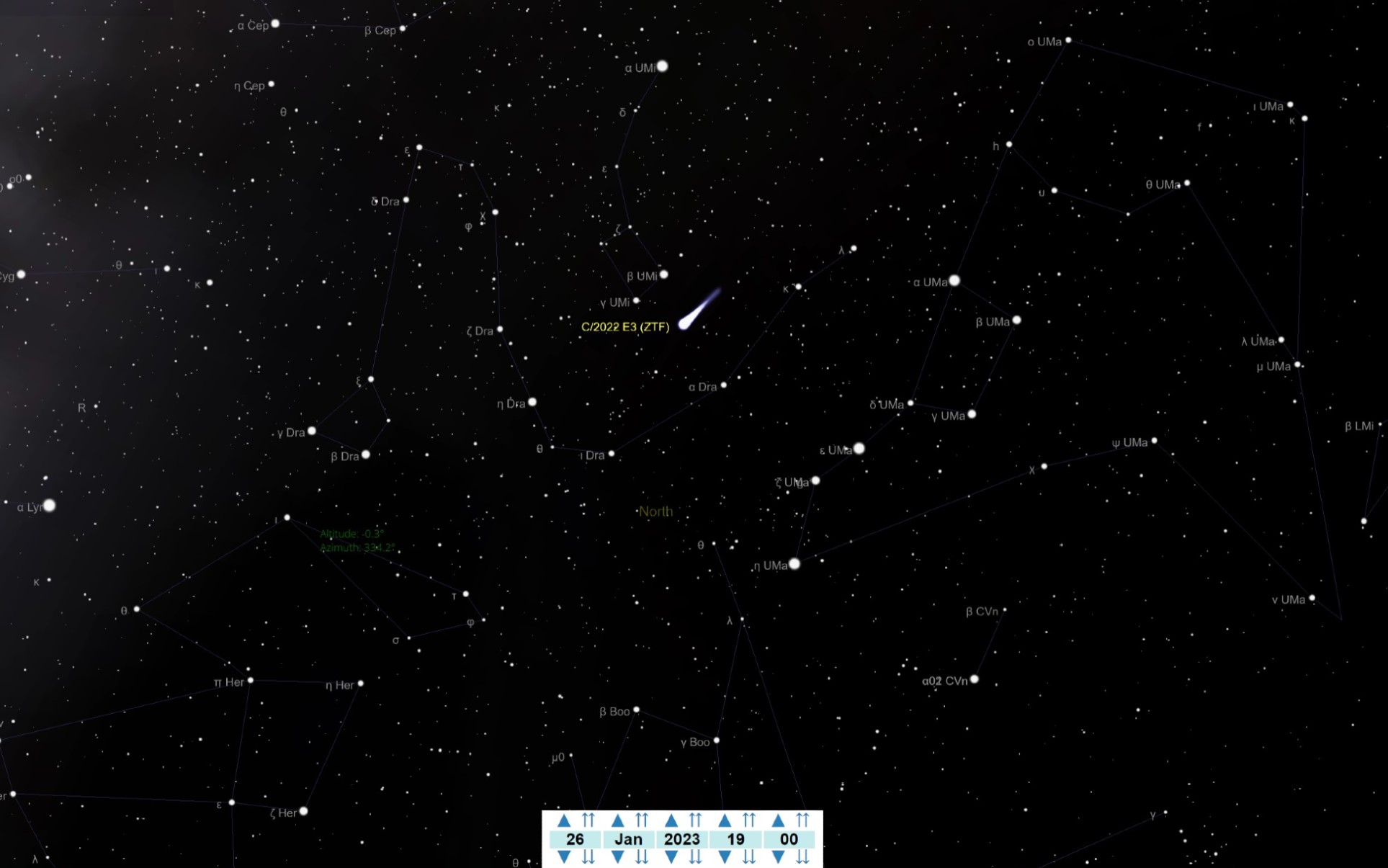How to see the green comet C/2022 E3 (ZTF) visible in the night sky now as it approaches Earth
Don't miss your chance to see this visitor from the outer reaches of our solar system as it prepares to make its closest approach to Earth.

The gorgeous green comet C/2022 E3 (ZTF) should now be visible to the naked eye under the right dark sky conditions.
The comet is rapidly approaching perigee, its closest point to Earth, which is making it easier to spot in the night sky. The comet, first discovered in March 2022 by astronomers Frank Masci and Bryce Bolin using the Zwicky Transient Facility (ZTF) at the Palomar Observatory in California, has been brightening since November, wowing astrophotographers with its brilliant green tail.
Comet C/2022 E3 (ZTF) is currently making its way through the northern skies and should reach its brightest magnitude in early February, according to In-The-Sky.org as it approaches perigee on Feb. 1. To see the comet for yourself, look to the north just after sunset and look for a faint greenish glow. Under the right dark sky conditions, the comet could be visible to the unaided eye, but binoculars will certainly make the job easier.
Related: Amazing photos of the green comet C/2022 E3 (ZTF)
More: How to view and photograph comets

Looking for a telescope to see comet C/2022 E3 ZTF? We recommend the Celestron Astro Fi 102 as the top pick in our best beginner's telescope guide.
Comet C/2022 E3 (ZTF) is available for tracking in most major astronomy and sky tracking apps. Additionally, University of Toronto astrophysicist Hanno Rein has created a free app available on the Apple app store dedicated entirely to locating and tracking comet C/2022 E3 (ZTF).
As of Monday (Jan. 23), comet C/2022 E3 (ZTF) appears close to the constellation Draco. The images below are courtesy of TheSkyLive.com.
Related: See '3 days in the life' of green comet as it heads towards Earth (photo)
Breaking space news, the latest updates on rocket launches, skywatching events and more!
On Thursday (Jan. 26), the comet will appear just beside Ursa Minor, the "Little Bear" or "Little Dipper."
By Jan. 30, the comet will make its way east toward Camelopardalis, where it will appear when it reaches perigee on Feb. 1.
By Feb. 10, the comet will have moved significantly to the east and will appear close to Mars, which might make it easier to spot.
If conditions aren't right for late night or early morning skywatching in your area, you're still in luck: The Virtual Telescope Project will be hosting a free livestream of comet C/2022 E3 (ZTF). The stream begins on Feb. 1 at 11:00 p.m. EST (0400 GMT) and can be watched courtesy of the project's website or YouTube channel.
Comet C/2022 E3 (ZTF) has already put on quite a show for astrophotographers, leading to scores of breathtaking pictures of the gorgeously green comet. In January, strong solar winds caused part of the comet's tail to break off in what astronomers call a disconnection event.
More recently, SpaceWeather.com reported that comet C/2022 E3 (ZTF) formed what is known as an "anti-tail," a phenomenon which causes a comet to appear to have a second, forward-facing tail. In reality, an anti-tail is an optical illusion caused when larger dust particles form a disk along the comet's orbit. As Earth passes through the comet's orbital plane, this dusty disk can be seen side-on, appearing as a reversed anti-tail.
Hoping to observe C/2022 E3 (ZTF)? Our guides on the best telescopes and best binoculars can help, as it doesn't take much magnification to see the comet as the month comes to a close. You can also check out our guides on how to view and photograph comets, as well our best cameras for astrophotography and best lenses for astrophotography to get started.
Editor's Note: If you get a great photo of comet C/2022 E3 (ZTF) and would like to share it with Space.com’s readers, send your photo(s), comments, and your name and location to spacephotos@space.com.
Follow Brett on Twitter at @bretttingley. Follow us @Spacedotcom, or on Facebook and Instagram.

Brett is curious about emerging aerospace technologies, alternative launch concepts, military space developments and uncrewed aircraft systems. Brett's work has appeared on Scientific American, The War Zone, Popular Science, the History Channel, Science Discovery and more. Brett has degrees from Clemson University and the University of North Carolina at Charlotte. In his free time, Brett enjoys skywatching throughout the dark skies of the Appalachian mountains.




